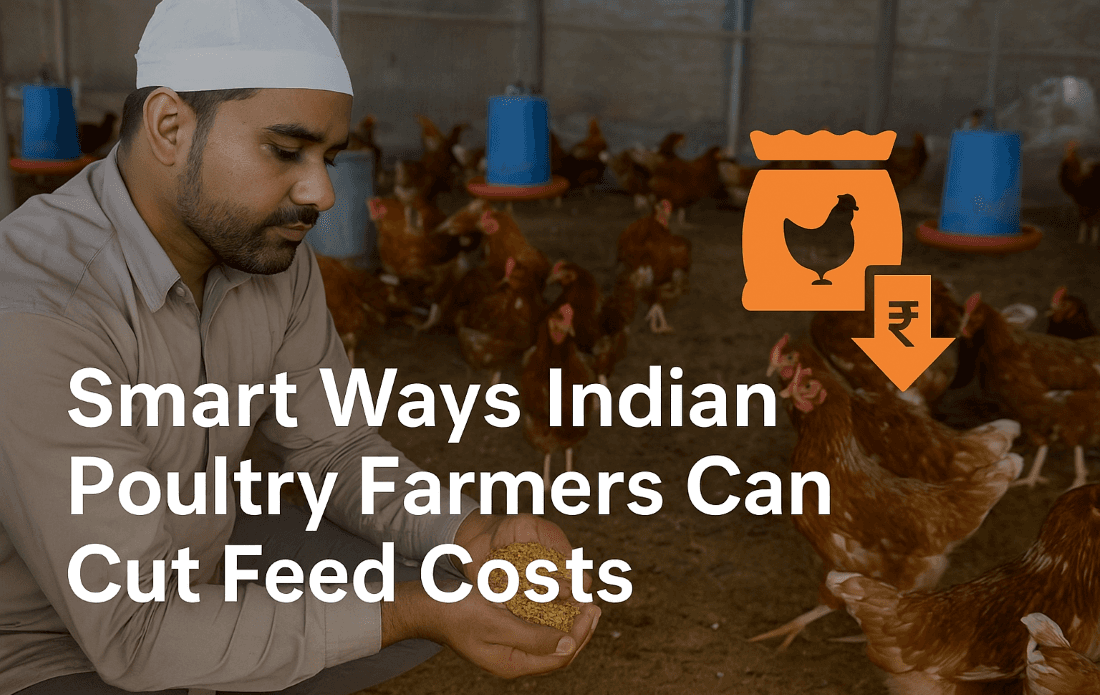
Feed prices have been climbing for years, and most poultry farmers in India feel the pressure during every buying cycle. Still, many farmers have found ways to control expenses without harming bird health or growth. A few even share tips in local groups with names like Chicken Guru, which adds a bit of fun to the learning process. The truth is, smart planning can trim costs more than most people expect.
Understanding what really drives feed cost
Most farmers focus only on the price per kilo, but the real cost is tied to how efficiently the birds use the feed. Waste, poor storage, and unbalanced diets increase cost quietly. If feed is fresh, stored well, and nutritionally balanced, birds gain weight faster and eat slightly less. This difference adds up over thousands of birds.
Using local ingredients wisely
Many regions in India have affordable ingredients that can replace a portion of commercial feed. You don’t need to switch completely. Even a partial mix can help.
Common local replacements include:
- Maize, broken rice, or sorghum.
- Groundnut cake or sesame cake in small portions.
- Green fodder for backyard flocks.
- Coconut residue or rice bran for older birds.
These work best when mixed correctly. Too much variation can cause nutrient gaps, so farmers often keep a steady base feed and blend local ingredients gradually.
Improving feed storage at the farm
A lot of farmers underestimate how much feed goes stale or moldy during humid months. Moisture destroys nutrients, and birds end up eating more just to maintain growth. Even a simple raised wooden platform or tightly sealed drums can protect feed from damp weather.
Some quick storage improvements:
- Keep bags off the floor;
- Use airtight containers if rats are common;
- Rotate old stock first;
- Store feed away from direct sunlight.
Good storage reduces wastage and keeps protein levels stable.
Adjusting feed according to bird age
Young chicks, growers, and layers need different nutrients. Using the same feed throughout the entire cycle wastes money. Chick starters are rich and expensive, so stretching it longer than needed increases cost. On the other hand, cutting nutrients too early slows growth.
A balanced feeding plan usually includes:
- Starter feed only for the first few weeks;
- Grower feed once birds gain strength;
- Finisher feed for broilers close to market time;
- Layer feed with higher calcium for hens.
This small adjustment alone saves farmers more than they expect.
Minimizing waste during feeding
Birds spill feed easily if the feeder height is wrong or if farmers fill it too much. Some farms lose several kilos a day without noticing. Feeder management doesn’t require any extra investment, just a bit of attention.
Simple changes include:
- Setting the feeder at the height of the bird’s back;
- Filling feeders only halfway;
- Cleaning feeders daily so feed doesn’t clump;
- Using deeper feeders for more active breeds.
Once farmers adjust these habits, feed lasts longer with no impact on bird health.
Exploring fermented feed and probiotics
Some farmers have started using fermented feed, which improves digestion and reduces the total amount of feed birds need. It takes a little effort to prepare, but it’s inexpensive and can boost immunity as well. A few spoonfuls of probiotics in water also help birds absorb nutrients more efficiently.
Conclusion
Reducing feed cost isn’t about cutting quality. It’s about making the feed you buy work harder. Smart storage, age specific feeding, local ingredient mixing, and better feeder management can lower expenses without affecting growth or egg production. Indian poultry farmers who follow these practical steps usually see steady improvements within a few cycles. With rising market demand for both meat and eggs, efficient feeding is one of the best ways to stay profitable while keeping your flock healthy.